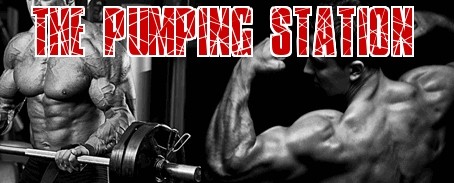How to Avoid Getting Sore Muscles
First and foremost, there may be misconception among some that muscle damage is needed for muscle growth. In fact, research shows that muscle damage is not needed to increase muscle mass.
By the way, getting sore muscles doesn't mean there is muscle damage. In fact, research also shows that getting sore muscles is not a reliable indicator of muscle damage. So, while there may be no muscle damage, sore muscles may interfere with your strength training program.
How Muscles Get Better and Stronger
Now, strength training can result in microscopic tears in muscle, or even a breakdown in muscle tissue. So, when these microscopic tears occur, the body uses satellite cells to repair the tears and build up muscles over time. As a result, the muscle is protected against future damage. In addition, it leads to muscle growth.
Furthermore, to help your muscles, it's important to have enough proteins in your diet. Also, your muscles need rest for the repair process to succeed.
How to Avoid Sore Muscles
1. First, stay hydrated by drinking water before you start your workout. Also, sip water intermittently throughout your workout. Finally, drink water at the end of your workout. Also, it appears that because of the electrolytes it contains, it's even better to drink raw coconut water after a workout. Indeed, these electrolytes may help prevent muscle cramps.
2. Second, to further alleviate chances of muscles cramping, eat a banana one hour before a workout. In fact, the potassium in the banana curtails lactic acid build up, which, by the way may cause muscles to hurt.
3. Third, do a five to ten-minute warm up and stretches before a workout. In fact, warming up help muscles get warmer. As a result, they are better prepared for the workout. By the way, even walking is a fine way to warm up.
4. Fourth, stretching is an excellent way to cool down after the workout. In fact, research shows that static stretching performed before and after a workout helps reduce sore muscles.
5. Or, do a very short cardio to really warm up muscles.
6. Next, stretch intermittently during the workout. By and large, stretching helps cut back on buildup of lactic acid and therefore may prevent muscle cramps.
7. In the meantime, use a foam roller to relieve any knots in muscles and soft tissue. For example, roll your hamstrings and quads over the roller.
8. Also, know how far you can exercise before it starts to hurt. And, avoid going over that threshold.
9. Most of all, use proper posture during the workout.
10. Also, select weights based on your form and condition. Indeed, using weights heavier than what your body is used to, is a common way to hurt your ligaments and muscles. Besides, strained ligaments can take a long time to heal.
11. Next, a few hours after the workout apply heating pad to muscles. In fact, the heating pad stimulates blood flow and loosens sore muscles. As a result, muscles heal faster.
12. Most of all, the following day, work on a totally different muscle group.
13. Meanwhile, many studies show that caffeine consumed before a workout helps reduce sore muscles and fatigue. For example, a study in the Journal of Pain reported that caffeine consumption resulted in a 49 percent drop in sore muscles. By the way, caffeine is an analgesic with pain-killing properties. Also, caffeine hydrates as well as water. Therefore, consuming caffeine may be a good idea before a workout.
14. Next, a 2012 study of women who performed a 20-minute low to moderately intense cycling workout following their strength training workout had reduced muscle pain along with added boost in strength. By and large, the light workout increased blood flow, which naturally decreases inflammatory processes, such as lymphatic draining, removing immune cells, and clear inflammatory mediators.
15. Finally, research shows that tart cherries have anti-inflammatory properties that significantly reduces inflammation in the body. In fact, research published in the Scandinavian Journal of Medicine and Science in Sports reported that marathoners drinking tart cherry juice before, during, and after a marathon had low occurrences of sore muscles. By the way, tart cherries are rich in anthocyanins. Moreover, tart cherries are believed to reduce excess inflammation. And, to get these benefits, all you need is two servings a week of tart cherry juice.
How to Help Sore Muscles
1. First, once you have sore muscles, spread Ben-Gay or other similar products over the muscles.
2. Second, a 2014 study showed that a massage after a workout significantly reduced pain. Also, a 2015 study showed that massaged muscles contain more blood vessels that those not massaged, which may result in improved recovery. Moreover, massaged muscles showed fifty percent of the scar tissue as non-massaged muscles.
3. Meanwhile, you can also treat sore muscles by self-massaging. Moreover, a self-massage allows you to put the right amount of pressure on the muscles. By and large, massages relax sore muscles and stretch them to relieve tension.
4. Or, you can topically apply ice to ease sore muscles. In fact, the ice decreases inflammation in sore muscles. By the way, some think that sore muscles aren't always due to lactic acid build up, but rather inflammation. So, it's better to reduce inflammation.
5. Next, lightly exercising sore muscles can help reduce their severity.
6. Finally, protein supplements or consuming protein containing foods may help.
Click Here to Sign Up for Your Free Bodybuilding Magazine Subscription

